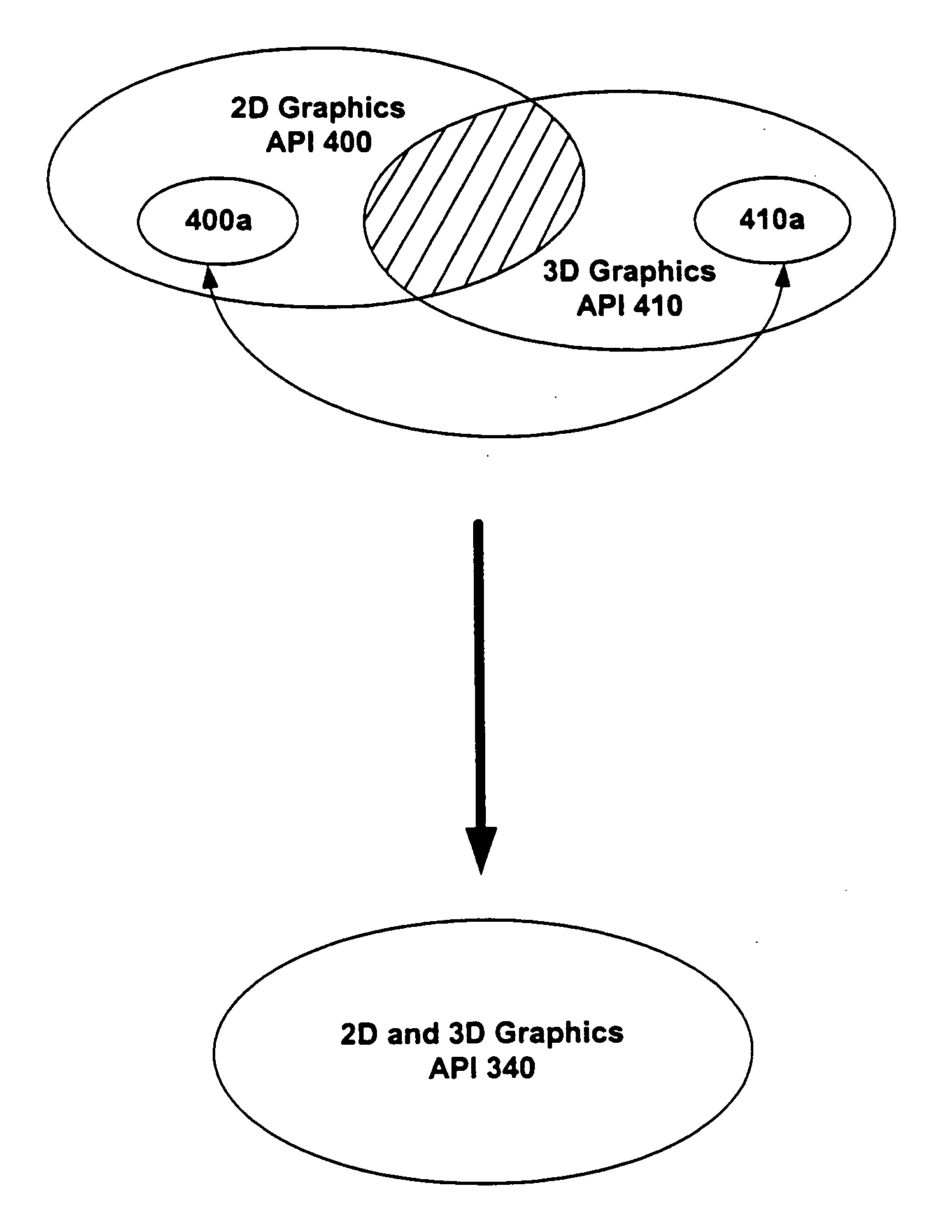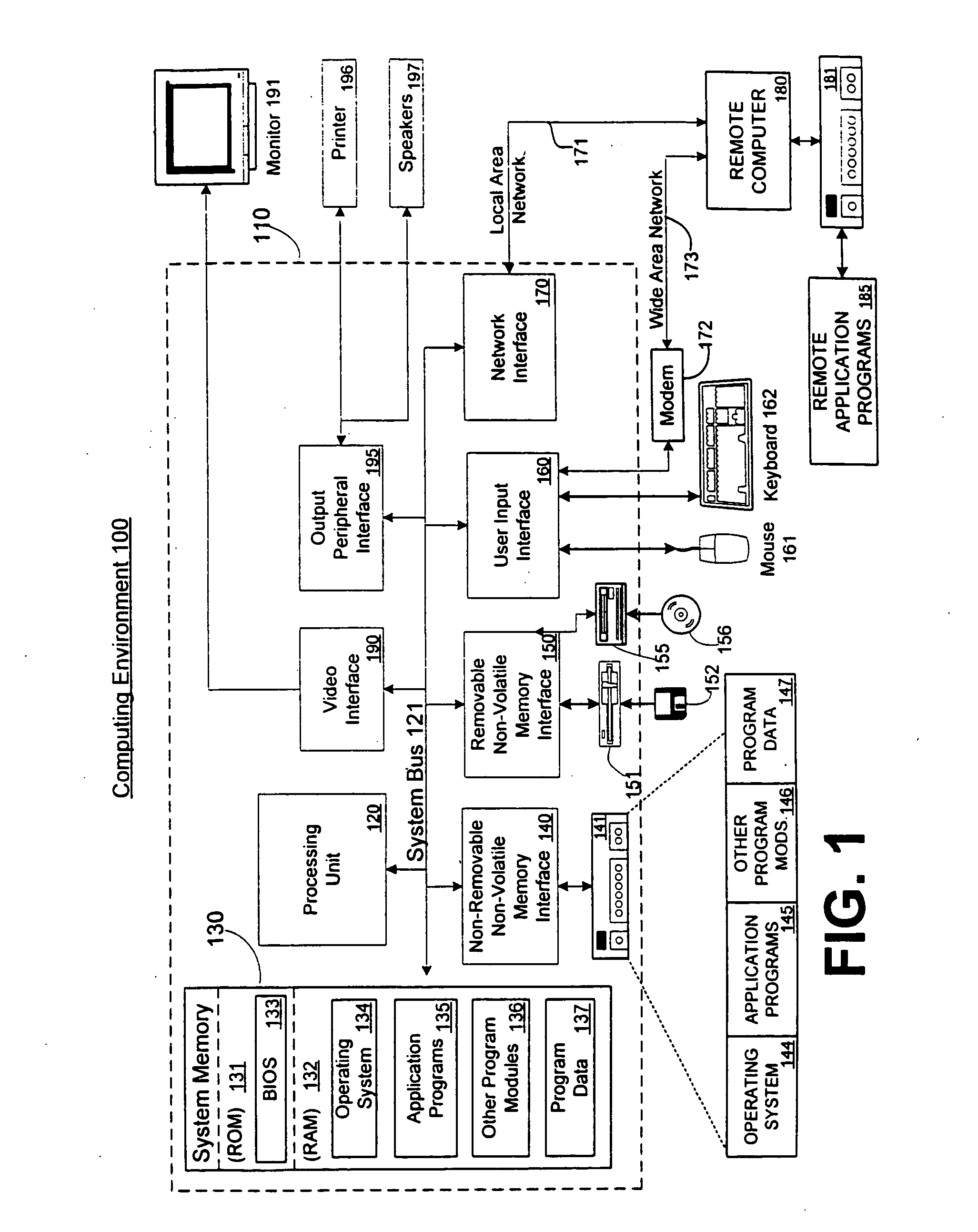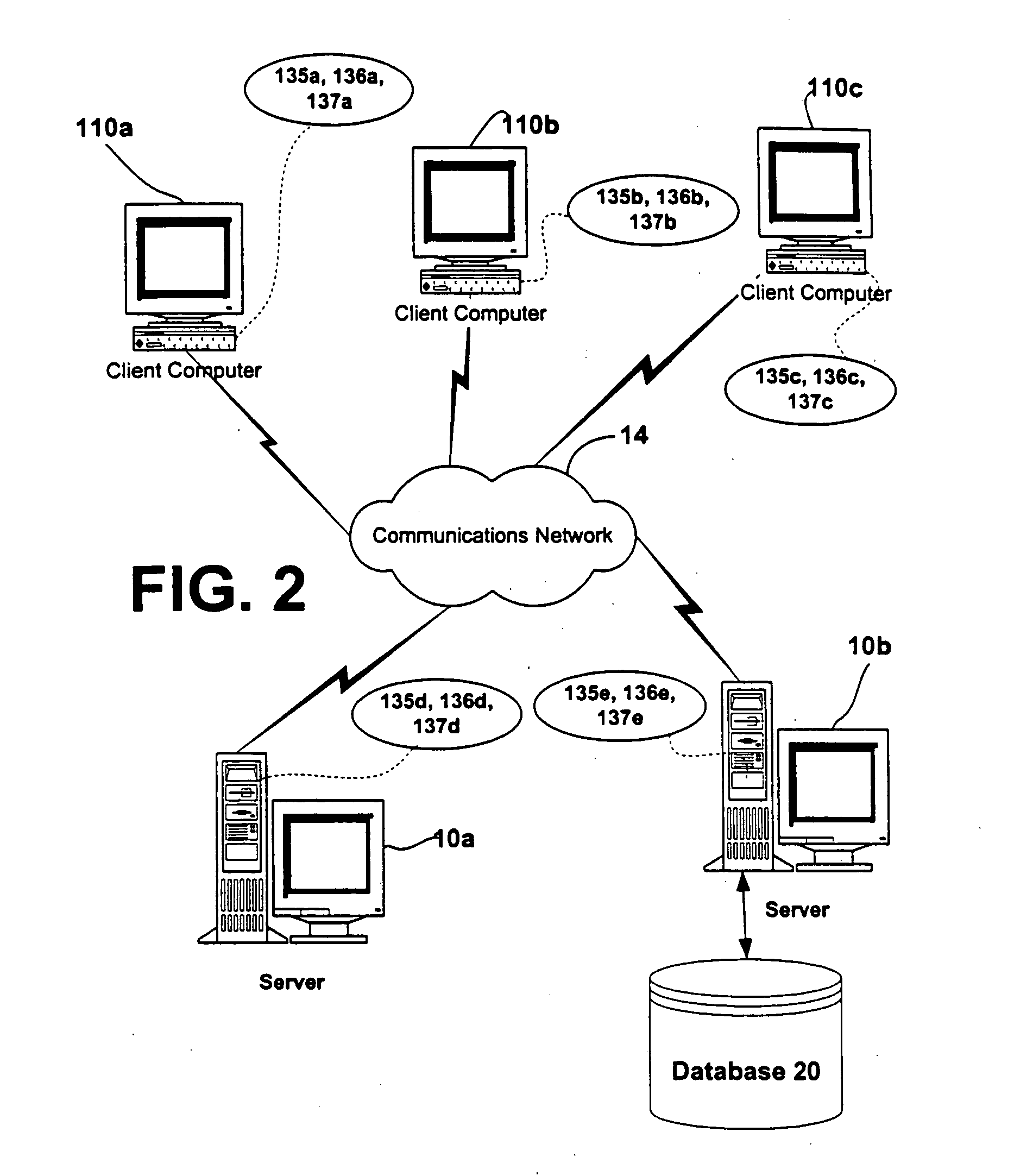Method and system for managing graphics objects in a graphics display system
a graphics display system and object management technology, applied in the direction of instruments, processing, processing/configuration, etc., can solve the problems of not providing the level of performance desired, previous generation graphics software interfaces that do not meet the needs of today's graphics applications and systems, and the connection to the surface can become severed or disconnected
- Summary
- Abstract
- Description
- Claims
- Application Information
AI Technical Summary
Benefits of technology
Problems solved by technology
Method used
Image
Examples
Embodiment Construction
Overview
The present invention provides a new and improved API as a layer between application developers and the current state of the art of graphics hardware and the pipeline that renders and processes the graphics data. As related in the background, a current problem with rasterizer / display units in 3D graphics systems exists with respect to the privatization of the formats used to increase the efficiency of display. The number and frequency of transformations between the privatized representation utilized with modem graphics hardware and the public representation utilized in host computing device system memory is currently out of the control of the developer, and consequently in many cases, multiple redundant copies of the same publicly formatted graphics data are made in host system memory, pursuant to various graphics operations e.g., lock and unlock operations.
The present invention thus exposes the ability to make a system copy of publicly formatted data to the developer, ...
PUM
 Login to View More
Login to View More Abstract
Description
Claims
Application Information
 Login to View More
Login to View More - R&D
- Intellectual Property
- Life Sciences
- Materials
- Tech Scout
- Unparalleled Data Quality
- Higher Quality Content
- 60% Fewer Hallucinations
Browse by: Latest US Patents, China's latest patents, Technical Efficacy Thesaurus, Application Domain, Technology Topic, Popular Technical Reports.
© 2025 PatSnap. All rights reserved.Legal|Privacy policy|Modern Slavery Act Transparency Statement|Sitemap|About US| Contact US: help@patsnap.com



